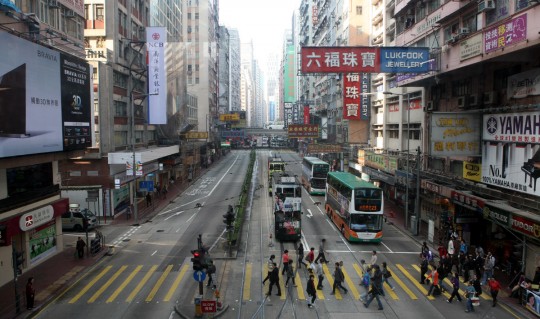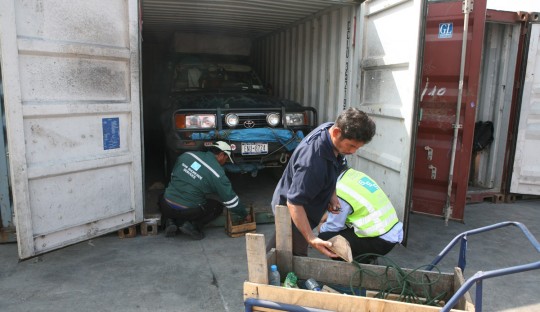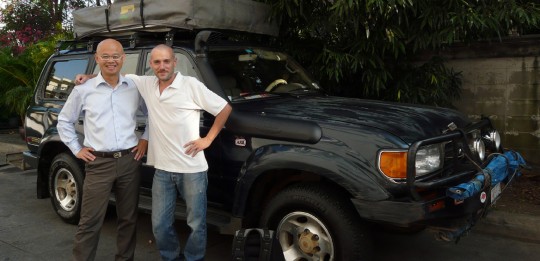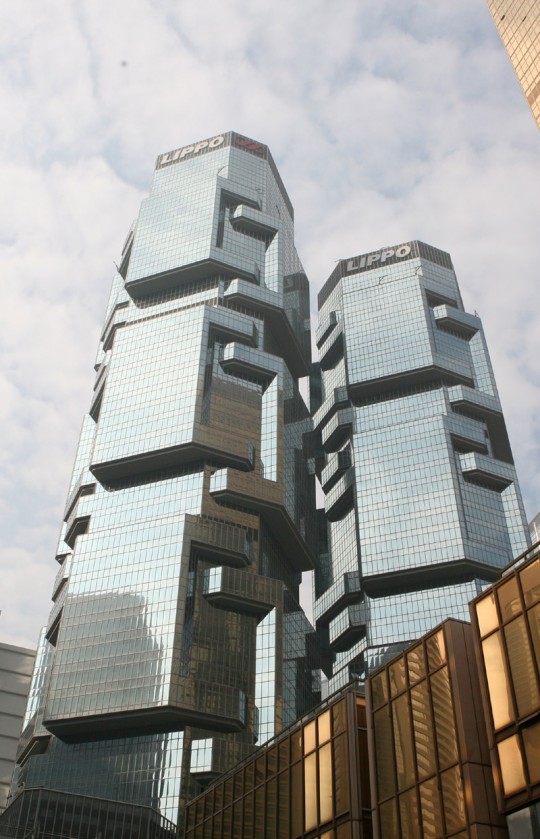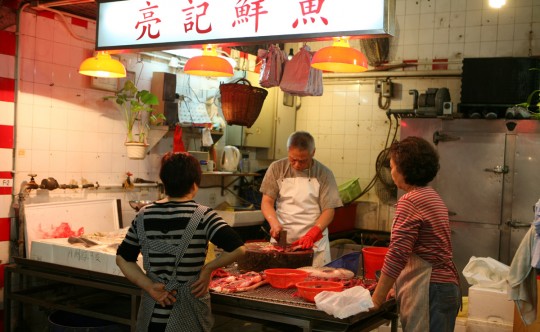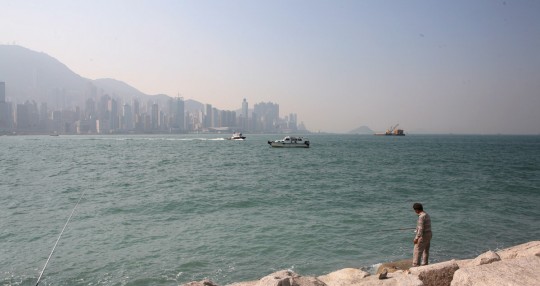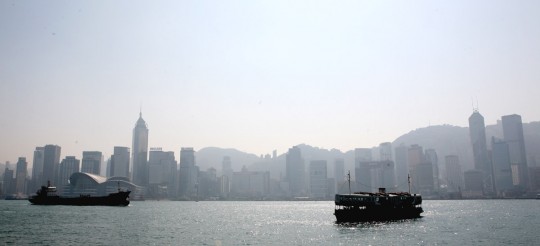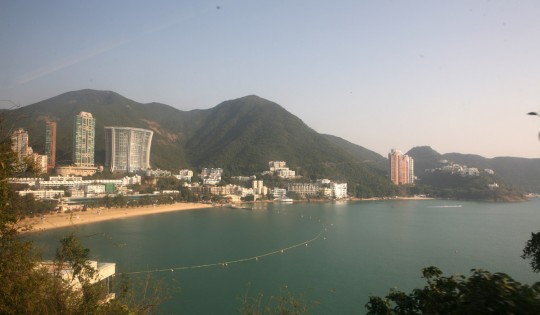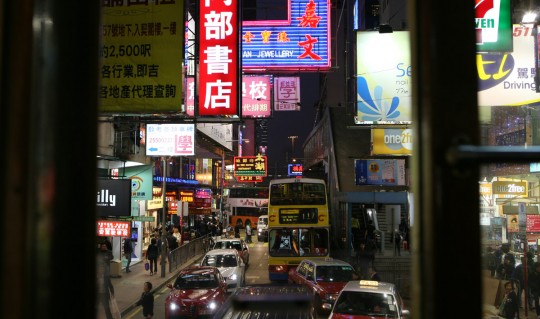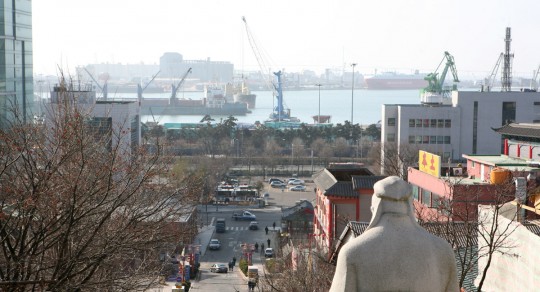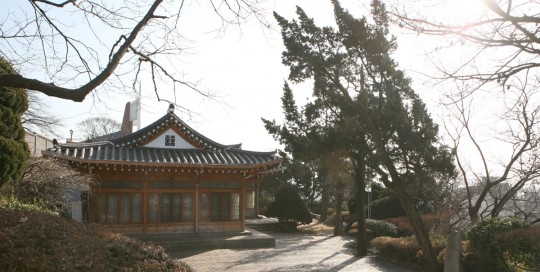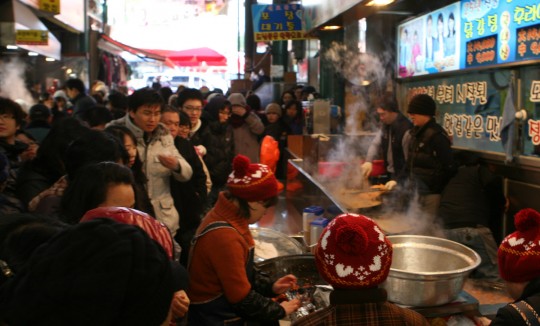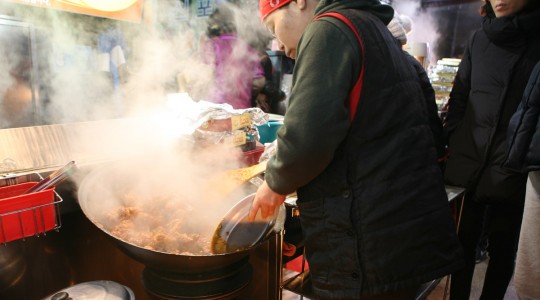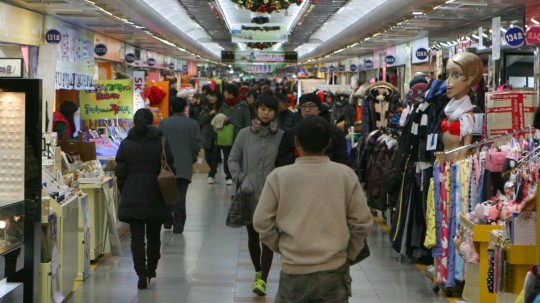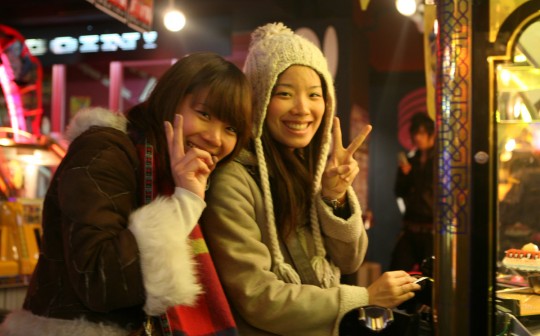
Of course in Seoul it is very cold as well. The city is very modern and I am impressed by the services offered in the subway, for example. There are terminals to access the internet for free, giant touch screen to get information and maps, devices to disinfect your hands and all sort of other gadgets. A lot of people speak English in Korea as well, which makes it easy to find my way around.
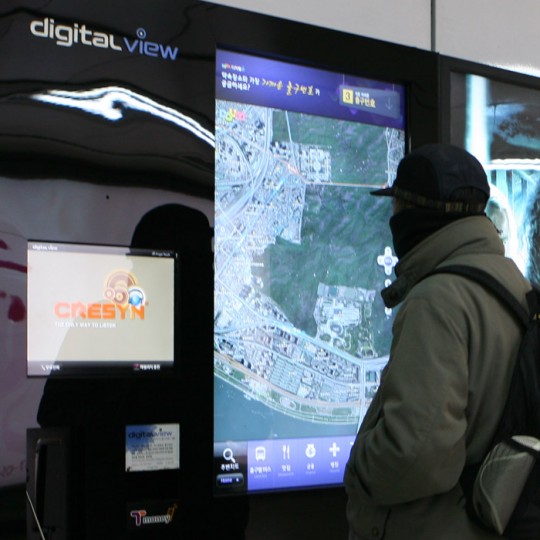
I am lucky enough to be invited to stay at the apartment of the parents of Jenni, an AP ex-colleague. Wherever I go to discover the city, I have to do it fast, because it is really cold out. Unfortunately the weather will make the visit of the capital uncomfortable as it is difficult to spend time out.
Everybody is completely wired, and as I take the subway, I am the only one not watching TV on my cell phone or playing video games. Again, quite a contrast with what I have seen in this trip. It looks like half of the planet’s population is trying to get enough to eat and the other half live in a virtual reality.
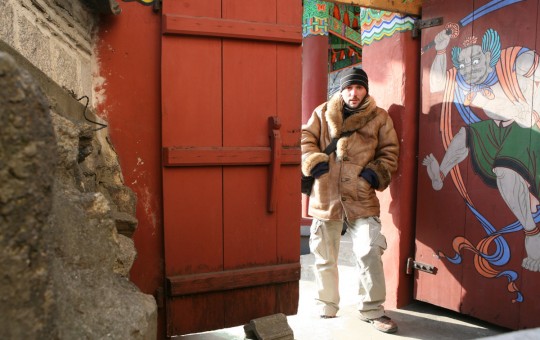
The snow and cold doesn’t stop me to go out the following day and visit COEX, the largest underground mall in Asia. No wonder it is located in Korea given the winter temperatures… Later I change scenery and go up in the hills to reach some kind of mountain village just a few minutes away from downtown Seoul.
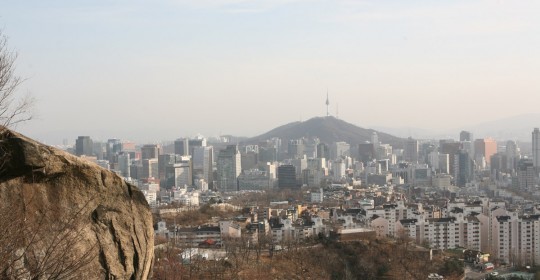
It’s Kuisadang, located on the slope of Mount Inwang. The royal national shrine where shaman rituals are conducted to this day is a beautiful place in a city that I find quite dull. Maybe it is the period of the year. Between Christmas and New Year’s, there’s not much happening, and most attractions are closed.
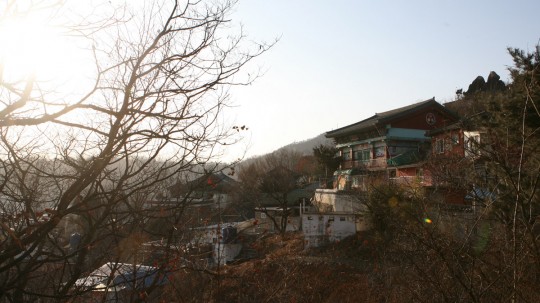
It is pleasant to be among the trees, climbing paths and watching frozen streams in the quiet afternoon. Soon, I have to go back down because of the chilly wind. Dumplings will be my lunch.
In the evenings, I go with Jenni’s brother to the public baths. It is quite an interesting place, and I should describe how it is since I don’t have picture. These bath houses are usually located in basement of buildings. A lot of Koreans use the service, but I hear that the younger ones now don’t go as often as they became more uncomfortable with nudity. I imagine it is one of the effects of globalization.
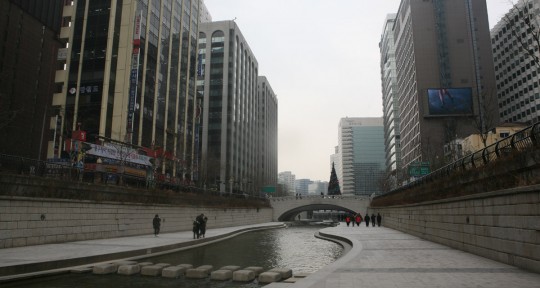
Anyhow, it cost you US$5 to go in, and as you pay, a locker key is given to you. There’s a male and women section, and when you find your locker, you get entirely naked and go to the next room. There you find different water pools which temperatures ranging from cold to very hot. My Lonely Planet guidebook described a feeling they call exhilarating when switching from cold bath to hot bath and all over again. Let me tell you I spent way more time in the hot bath… You also visit dry or humid sauna rooms with temperatures ranging from 60C to 100C (140 to 212 Fahrenheit).
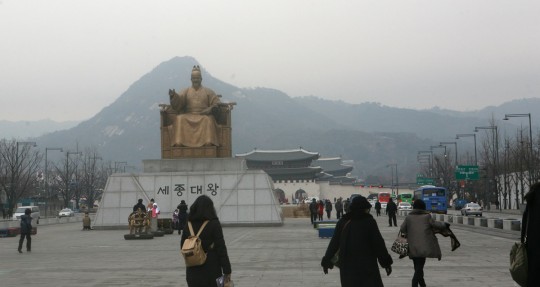
Before and after the baths, there are showers where you can wash. Soap, shampoo and toothbrushes are supplied. Quite a nice place to relax after a day spent wandering around.
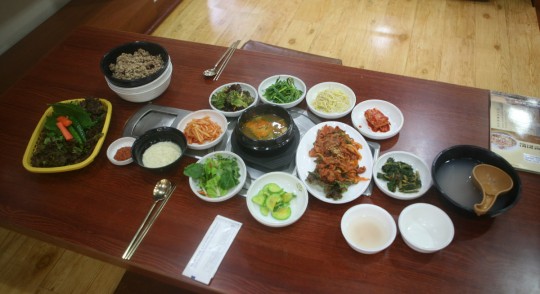
Korean food is at my taste as well. Bulgogi which is barbecued beef is one of my favorite meals since a long time, and I also like bibimbap which is a bowl of rice topped with sautéed vegetables, an egg and chili pepper paste.
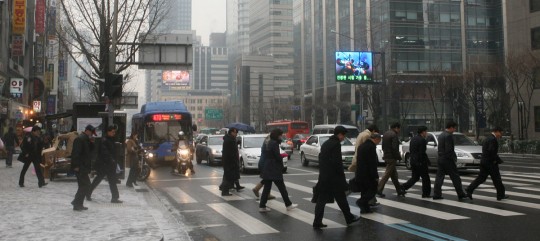
After few days in the capital, I decide to seek a warmer weather in the south of the country. I take a train to Gyeongju, a city on the east coast of Korea which used to be the capital until 935 AD. My ride is one of these bullet trains so common in Asia and developed by French engineers. It is very quick to get to my destination as speed – displayed in the cars – was averaging 260 km/h (160 mi/h) when I looked at it.
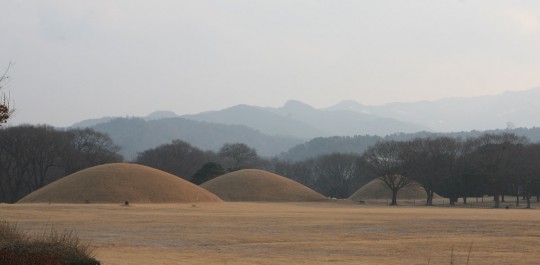
The main features of old Gyeongju and the easiest to access without a vehicle are Tumulus which are grass-covered burial grounds spread all over the city. Those are similar and serve the same purpose than Egyptians pyramids, but smaller. Most of the building activity seems to have happened around 500 AD, and restoration and excavation work only began in the 20th century.
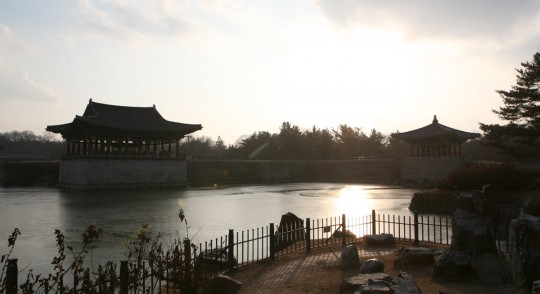
It’s still not Florida here, and I spend my first night in a freezing guesthouse dorm. This will be the kind of accommodation I will use until I get back to the United States. It is just a brief stop I do in Gyeongju as I leave by bus the day after to reach the close city of Busan, few hundred kilometers only from the Japanese coast.
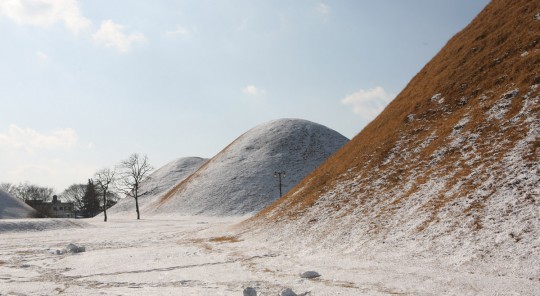
As I arrive I try to make a reservation on the following day ferry to south Japan. All the overnight ferries are full, and many of them are not running the following days because of the New Year. Finally, I decide to take the Beetle, a fast ferry getting to destination in few hours (US$130).
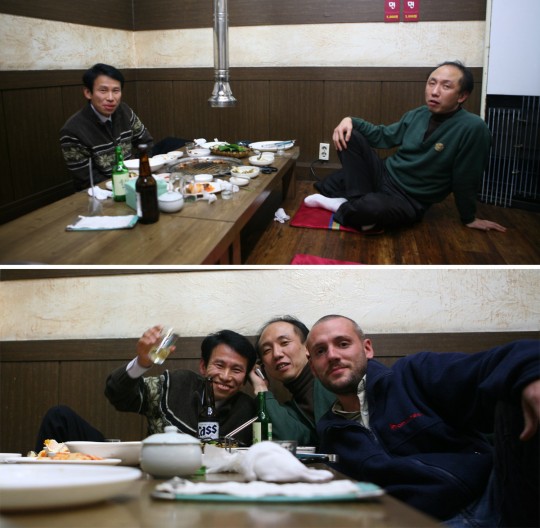
For my last night in Korea, I decide to go get Korean barbecue one more time. As always, I meet some people in the restaurant and they invite me to try a selection of local drinks. This is one thing that is amazing when you travel alone. You are constantly invited to share a table with people, and locals are way more likely to speak with you then when you are with fellow travelers.
In the morning I get to the ferry terminal only to get annoying news. The weather is too bad for the boat to depart as the sea is rough between the two countries. Once again I am a victim of the weather.
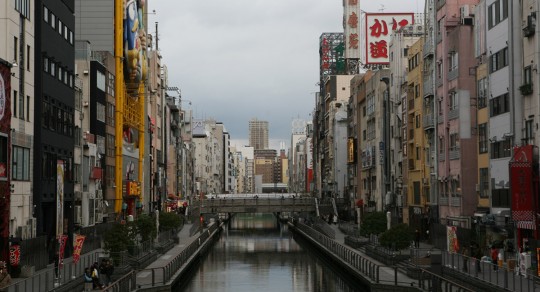
But soon enough, and thanks to the free Wi-Fi networks present everywhere in Korea, I am able to book a plane ticket leaving in the afternoon to Osaka. Too bad I will have to scratch my plans to visit Hiroshima, but at least I am on the move and will be able to spend more time in the Kyoto area.

After a bumpy flight I arrive in Osaka in the early evening. Taking the train from the airport, I get in the city center and find my guesthouse. As I go get dinner, I identify the next challenge: finding cash. For some reason, the Japanese banking system remained unusually closed to global transactions, and it is difficult to get money from ATMs with a foreign credit card. I am able to find a restaurant where I can pay with the card, but I will have to find a solution soon to this problem.
One of the most intriguing things in Japan is the smoking rule. At the opposite of the occidental laws, it seems that you can’t smoke in cities outdoors, but you enjoy more freedom in indoors public space. For example, there are many places where you can’t smoke in the street, but it is allowed in restaurant, bars, public baths or video game arcades. Strange…
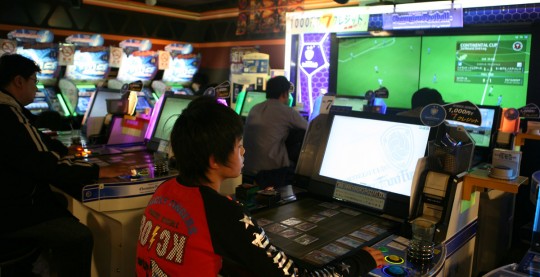
The following day I put together all of the cash I have from the countries I visited previously. I still have a lot of Thai Bahts, and with my Malaysian Ringgits, Indian Rupees and Bangladeshi Thakas, I should be alright for a while. It turns out that money changers are not interested by the Indian and Bangladeshi money, but I still get enough money from them to check-in in a capsule hotel for the night and get dinner and a few drinks. Which is significant since it is December 31st and I shall go out at least until midnight. Osaka is a city of three-million people an offer a nice preview of Tokyo.
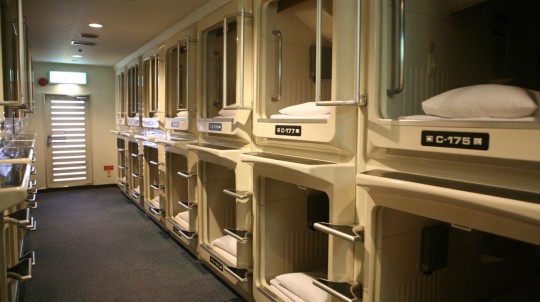
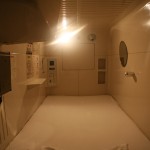
These hotels are very economical on Japanese standards, as you can get a bed for US$34 on the shelves of a well located hotel. Capsule hotels are unique to Japan. There you find many small “rooms” which are called capsules, the goal being to provide economical lodging. The plastic capsules size to a modular plastic or fiberglass is around 6 feet x 3 feet x 3 feet (2 meters x 1 m x 1 m). It does provide enough room to sleep comfortably. TV above your bed is provided if you are willing to pay. There are vending machine and Laundromat everywhere as well as free baths similar to the one I saw in Korea. Cost for one night: US$ 33 in one of the 400 Asahi Plaza Shinsaibashi capsule. I am sure the concept would work in New York City.
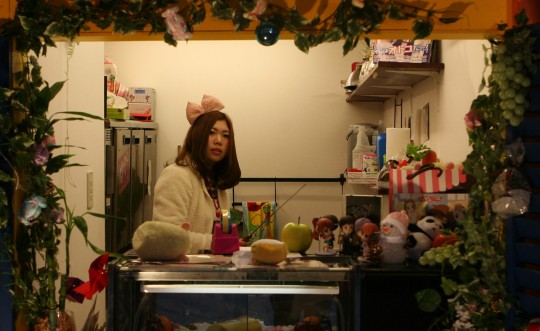
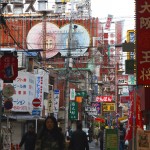
Everything is expensive in Japan. Prices for everything are higher than in the U.S. You can hardly have simple dinner for less than $US 25. Surprisingly, very few Japanese people speak English which makes it difficult to communicate in everyday situation. One of the consequences is that most of the time I have no idea what I order in restaurants. And even after eating, I still have no idea what it was. But it is pretty good!
I spend New Years Eve evening in an Irish bar, but even here, it is very quiet. Apparently this holiday is the equivalent of Thanksgiving Day in the U.S., and most people like to spend it with their family. Christmas is the opposite, and people go out with friends for the occasion.
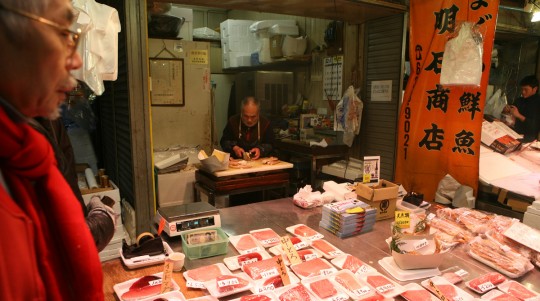
In the morning, I leave the hotel and take a train ticket to Kyoto which is only a 45 minutes ride from Osaka.
About Los Angeles, U.S.A.
Few people have expressed interest in meeting me in Los Angeles. I have a stand-by ticket on the Delta Airlines flight 284 arriving at LAX @ 8:40am on Sunday January 9, 2011. There was some discussion about maybe getting breakfast after that, but everything is up in the air. If interested you should contact Han Duong on one of these emails: duong_viet_thuan_han@yahoo.com or hduong1@uci.edu . Thanks to everyone offering accommodation in the city, but I will stay at my old friends Andy and Michelle place.
I will be pretty busy in L.A. as I will have to work on the clearance of the truck and do some minor work on it as well, but will also be willing to meet for drinks later in the week. I will post information on the website.
My father should join me in the city and we will cross the U.S. together. Las Vegas is the likely destination when we leave the coast.

